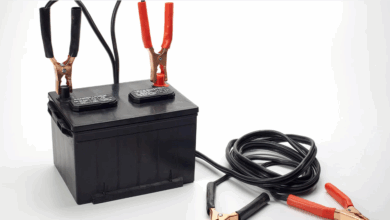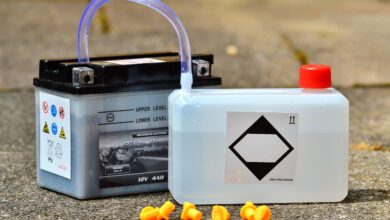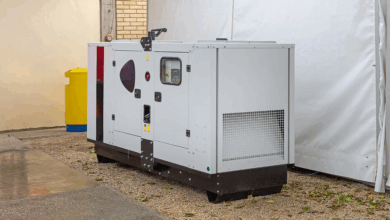Finding the Right Fit: Best Generators for Every Home

Finding the Right Fit: Best Generators for Every Home
Power outages are more than just an inconvenience; they can disrupt daily life, compromise safety, and even lead to costly damage, like spoiled food or frozen pipes. Whether caused by severe weather, grid failures, or local issues, losing power leaves many homeowners vulnerable. A reliable home generator provides peace of mind, ensuring essential appliances keep running and life continues relatively uninterrupted.
However, the world of home generators can seem daunting. With various types, sizes, and features, choosing the "right fit" for your specific needs and home can feel like a complex puzzle. This article aims to demystify the process, helping you understand the options and make an informed decision that guarantees power when you need it most.
Why You Need a Generator: Assessing Your Vulnerability
Before diving into generator types, consider why you need backup power.
- Frequent Outages: Does your area experience regular power cuts, perhaps due to weather or grid instability?
- Duration of Outages: Are outages typically short blips, or do they last for hours or even days?
- Essential Needs: What absolutely must run during an outage? (e.g., refrigerator, furnace/AC, medical equipment, sump pump, well pump, lights, communication devices, specific electronics).
- Lifestyle: Do you work from home? Have young children, elderly residents, or individuals with medical needs requiring power?
Understanding your vulnerability and essential power needs is the crucial first step in determining the size and type of generator required.
Decoding Generator Types: Portable vs. Standby vs. Inverter
Generators generally fall into three main categories, each with distinct characteristics, pros, and cons:
-
Portable Generators:
- What they are: The most common and often the most affordable option. These units are designed to be moved and typically sit outdoors, connecting to appliances via extension cords or a manual transfer switch. They usually run on gasoline, propane, or sometimes diesel.
- Pros:
- Lower initial cost.
- Mobile – can be used for camping, tailgating, job sites, as well as home backup.
- Wide range of sizes available.
- Cons:
- Require manual starting and setup during an outage.
- Need to be refueled frequently (gasoline).
- Can be quite noisy.
- Produce less "clean" power than inverter types, potentially risky for sensitive electronics without a surge protector.
- Require careful placement far from the house due to carbon monoxide risk.
- May only power a limited number of circuits or appliances via extension cords or a manual transfer switch.
- Best for: Homeowners needing backup for only essential appliances (refrigerator, some lights, phone charging) during infrequent, relatively short outages. Good for those with a smaller budget or who also need a generator for recreational use.
-
Inverter Generators:
- What they are: A type of portable generator that uses advanced electronic technology to produce "cleaner" AC power, which is then converted to DC and back to stable AC. This process results in a more stable power wave. They are often quieter and more fuel-efficient than traditional portable generators.
- Pros:
- Produce clean, stable power safe for sensitive electronics (laptops, TVs, medical devices).
- Significantly quieter operation compared to traditional portable generators.
- More fuel-efficient, leading to longer run times on a tank of fuel.
- Often lighter and more compact than conventional portables of similar wattage.
- Some models can be linked together for increased power output.
- Cons:
- Higher initial cost than conventional portable generators of similar wattage.
- Generally available in lower wattage ranges compared to the largest conventional portables or standby units.
- Best for: Homeowners needing backup for essential appliances plus sensitive electronics. Excellent for those prioritizing quiet operation, fuel efficiency, and clean power. Also popular for RVs and camping.
- Standby Generators:
- What they are: Permanent installations, typically located in the yard, resembling a large air conditioning unit. They are connected directly to your home’s electrical system via an automatic transfer switch and usually run on natural gas or propane supplied from your home’s line or a large tank. They start automatically within seconds of detecting a power outage and shut off when utility power is restored.
- Pros:
- Automatic operation – no need to be home or manually start during an outage.
- Can power the entire house (lights, HVAC, large appliances) or pre-selected circuits depending on size.
- Connected to a continuous fuel source (natural gas or large propane tank), providing potentially unlimited runtime.
- Generally quieter during operation than portable generators (though still produce noise).
- Installed safely outdoors, permanently wired to the home’s system.
- Often adds value to a home.
- Cons:
- High initial purchase price and professional installation costs.
- Requires regular professional maintenance.
- Less mobile (fixed installation).
- Requires zoning approval and adherence to local building codes.
- Best for: Homeowners in areas with frequent or long outages, those who want whole-house power backup, individuals with critical medical equipment, or those who prioritize convenience and automatic operation. Suitable for larger homes and families.
Key Factors to Consider When Choosing Your Generator
Once you understand the types, several key factors will guide you to the right size and model:
-
Power Needs (Wattage): This is perhaps the most critical factor. Generators are rated by their wattage output – running watts (continuous power) and starting watts (a temporary surge needed by appliances with motors like refrigerators or HVAC systems).
- How to calculate: Make a list of all the appliances and lights you want to power simultaneously during an outage. Find the running watts for each. Add them up for the total running watts needed. Then, identify the appliance with the highest starting watts and add that difference (starting watts – running watts) to your total running watts to get your required starting watts. Always err on the side of slightly more power than you think you’ll need. A certified electrician can help with this calculation, especially for larger systems.
- Example: Refrigerator (800 running, 2200 starting) + Lights (500 running) + Sump Pump (800 running, 1500 starting) = 2100 running watts needed for these continuously. The highest starting surge is the refrigerator’s (2200 – 800 = 1400). Total minimum requirement: 2100 running + 1400 surge = 3500 starting watts, 2100 running watts. You’d look for a generator rated at least 2200-2500 running watts with sufficient surge capacity (often listed as starting watts).
-
Fuel Type:
- Gasoline: Widely available, but fuel degrades over time, requires careful storage, and produces more emissions. Used by most portable generators.
- Propane: Burns cleaner than gasoline, stores well long-term, and is readily available in tanks. Used by some portables and many standby generators. Requires a storage tank.
- Natural Gas: The most convenient for standby generators if you have a natural gas line connection. Provides a continuous fuel supply with no storage needed. Emissions are lower. Not typically used for portables.
- Diesel: More fuel-efficient and longer lasting than gasoline, but diesel fuel can gel in cold weather and has a distinct odor. Primarily used for large, heavy-duty portable and commercial standby units.
- Dual Fuel: Some portable generators can run on either gasoline or propane, offering flexibility.
-
Budget: Consider not just the purchase price but also installation costs (significant for standby), fuel costs, and ongoing maintenance.
-
Noise Level: Measured in decibels (dB). Portable generators (especially conventional ones) can be very loud (70-80+ dB). Inverter generators are significantly quieter (50-65 dB). Standby generators are generally located further away and encased, making them less disruptive right next to the house, though they still produce noise (60-70+ dB).
-
Safety Features: Look for features like low-oil shutoff, automatic voltage regulation, built-in circuit breakers, and CO (carbon monoxide) shutoff sensors (critical for portables). A transfer switch (manual or automatic) is essential for safely connecting a generator to your home’s wiring and preventing dangerous backfeeding into the grid.
-
Runtime and Fuel Capacity: How long can the generator run on a tank of fuel or at its current fuel source capacity? This is crucial for extended outages.
- Installation and Placement: Portable generators require a safe, outdoor location far from windows and doors. Standby generators require professional installation, including electrical and fuel line connections, and adherence to local codes and setback requirements.
Matching the Generator to Your Home
Let’s look at typical home scenarios:
- Small Home / Minimal Needs / Infrequent Outages: A smaller portable generator (1,500-3,000 running watts) might suffice to power a refrigerator, some lights, and charge devices. An inverter generator in this size range is a good upgrade for quieter operation and clean power.
- Mid-size Home / Moderate Needs / Occasional Outages: Consider a medium-sized portable (3,000-5,000 running watts) or a mid-range inverter generator. This could power essentials plus perhaps a few extras or power items via a manual transfer switch connected to specific circuits (e.g., furnace fan, kitchen outlets). A smaller standby generator (5-10 kW) could power essential circuits automatically.
- Large Home / Extensive Needs / Frequent or Long Outages: A standby generator (10 kW or larger, potentially 20+ kW for whole-house power) is likely the best fit. This ensures automatic, seamless power for HVAC, major appliances, and potentially the entire electrical load of the home. Large, heavy-duty portable or inverter generators might also be considered with a larger manual transfer switch, but lack the automatic convenience and unlimited fuel supply of natural gas/large propane standby units.
Installation and Safety: Non-Negotiable
Regardless of type, safe operation is paramount.
- Portable Generators: Never run indoors or in attached garages. Ensure adequate ventilation outdoors, away from windows and doors, to prevent lethal carbon monoxide buildup. Use heavy-duty, outdoor-rated extension cords. Do NOT connect directly to a wall outlet (backfeeding).
- Transfer Switch: For safely powering hardwired appliances (furnace, well pump) or multiple circuits, a transfer switch is essential. A manual transfer switch requires you to switch circuits on/off manually. An automatic transfer switch (standard with standby generators) detects outages and switches power sources automatically. This prevents backfeeding, which is dangerous to utility workers and can damage your home’s wiring.
- Standby Generators: Must be professionally installed by qualified electricians and plumbers (for fuel). This ensures correct electrical connection via the automatic transfer switch and proper fuel line connection, adhering to all local codes and regulations.
Maintenance is Key
Like any engine, generators require regular maintenance to run reliably.
- All Types: Check oil levels, change oil and filters per manufacturer recommendations. Inspect air filters, spark plugs, and fuel lines.
- Portable: Drain gasoline if storing for long periods or use a fuel stabilizer. Test run periodically.
- Standby: Follow manufacturer’s maintenance schedule, which often includes professional servicing annually or bi-annually. Ensure the automatic exercise function is set up and working.
FAQs
- How do I figure out what size generator I need?
List all the appliances you want to run simultaneously. Find their running watts and the highest starting watts among them. Add the running watts together, then add the difference of the highest starting watts to the total running watts for your minimum requirement. It’s best to get a generator slightly larger than your calculation. - What is a transfer switch and why do I need one?
A transfer switch is a device that safely connects your generator to your home’s electrical panel. It isolates your home’s wiring from the utility grid while the generator is running, preventing dangerous backfeeding of power into the grid. Manual transfer switches require you to flip breakers, while automatic transfer switches do this automatically. - Can I plug a portable generator directly into a wall outlet?
ABSOLUTELY NOT. This is known as backfeeding and is extremely dangerous. It bypasses safety measures, can damage your home’s electrical system, and can electrify utility lines, potentially injuring or killing utility workers. Always use a transfer switch or heavy-duty extension cords powering individual appliances directly from the generator’s outlets. - How much does a generator cost?
Portable generators range from a few hundred to several thousand dollars. Inverter generators are typically more expensive than conventional portables. Standby generators are the most significant investment, ranging from $5,000 to $20,000 or more, including professional installation. - How long can a generator run?
Portable and inverter generator runtime depends on fuel capacity and load, typically 8-12 hours on a tank of gas. Standby generators connected to natural gas or a large propane tank can run for days as long as the fuel source is available. - What maintenance does a generator need?
Regular oil changes, filter replacements (air, fuel), spark plug checks, and general inspections are necessary. Standby generators often require professional annual servicing. Test running your generator regularly is also crucial.
Conclusion
Choosing the right generator for your home is a significant investment in comfort, security, and safety. It’s not just about buying a piece of equipment; it’s about ensuring reliable power when the grid fails. By carefully assessing your power needs, understanding the different types of generators available, and considering factors like fuel, budget, noise, and safety, you can confidently find the perfect fit for your home. Whether it’s a nimble inverter generator for essentials, a robust portable for manual backup, or a seamless automatic standby system, the right generator provides invaluable peace of mind, keeping the lights on and essential systems running, no matter what the weather or grid throws your way. Consult with a qualified electrician if you’re unsure about sizing or installation, and always prioritize safe operation above all else.




![How to Bypass CO Sensor on Generator – [4-Step Safety Guide]](https://www.generator411.com/wp-content/uploads/2025/08/co-sensor-on-generator-390x220.png)